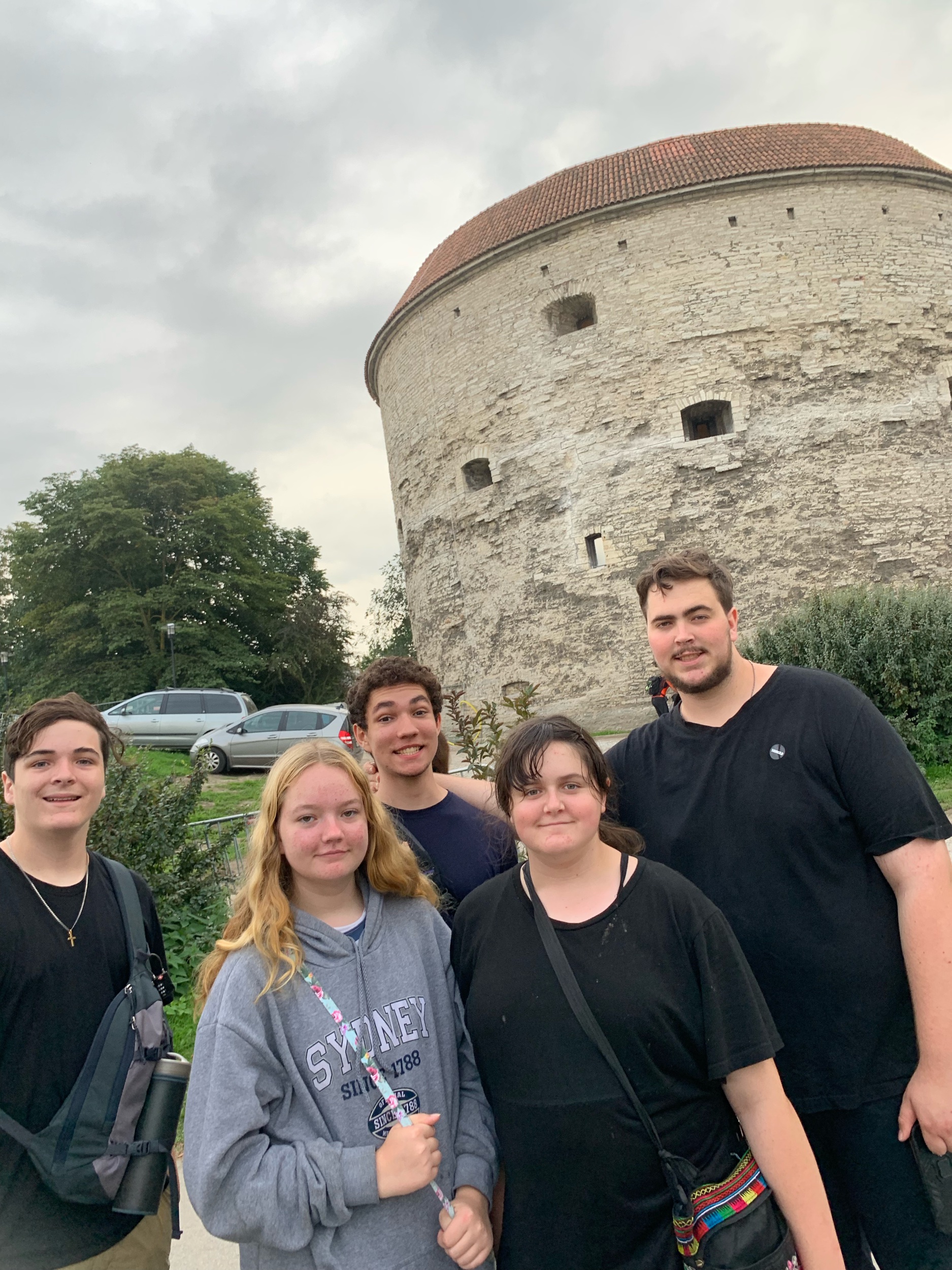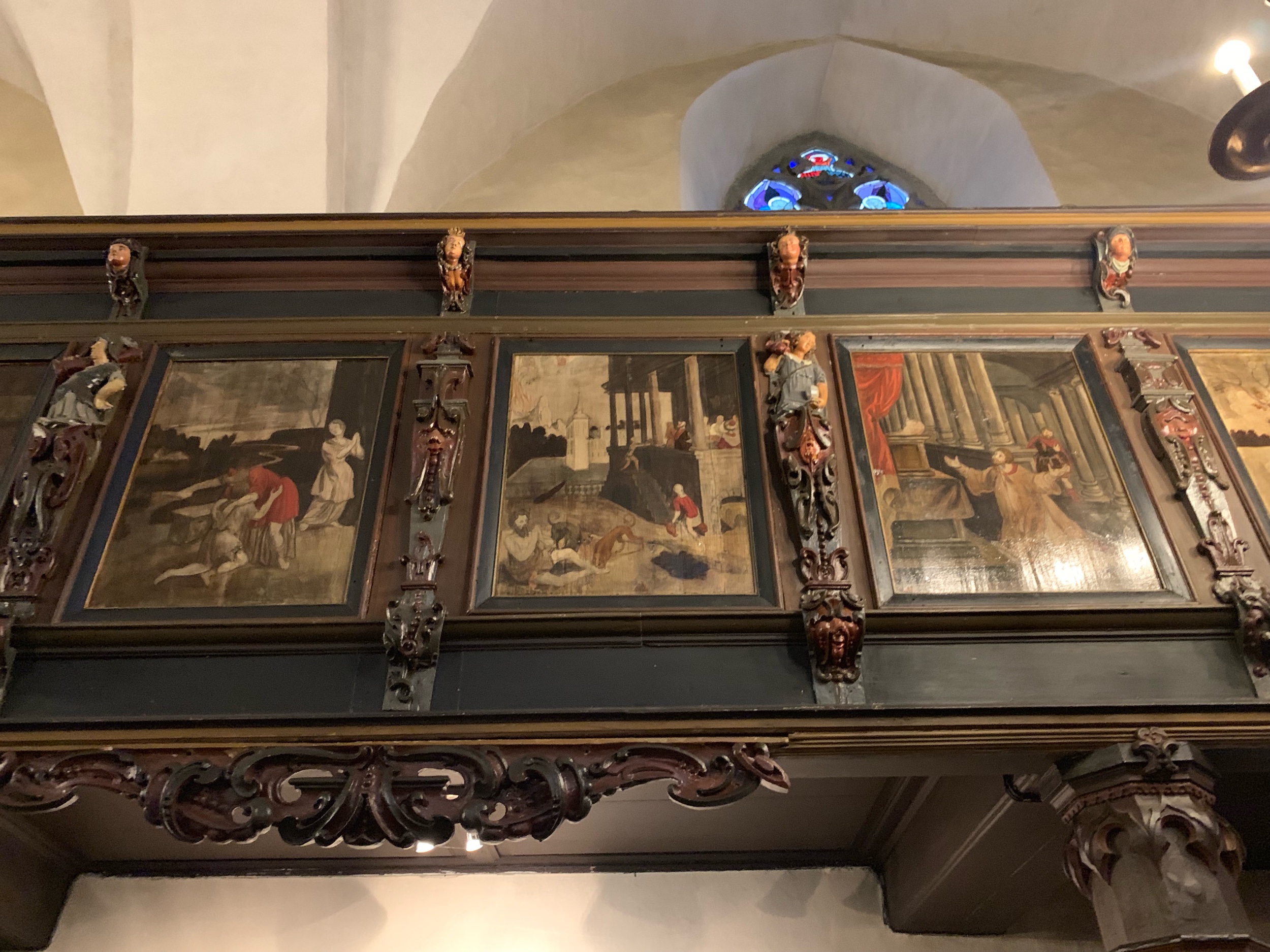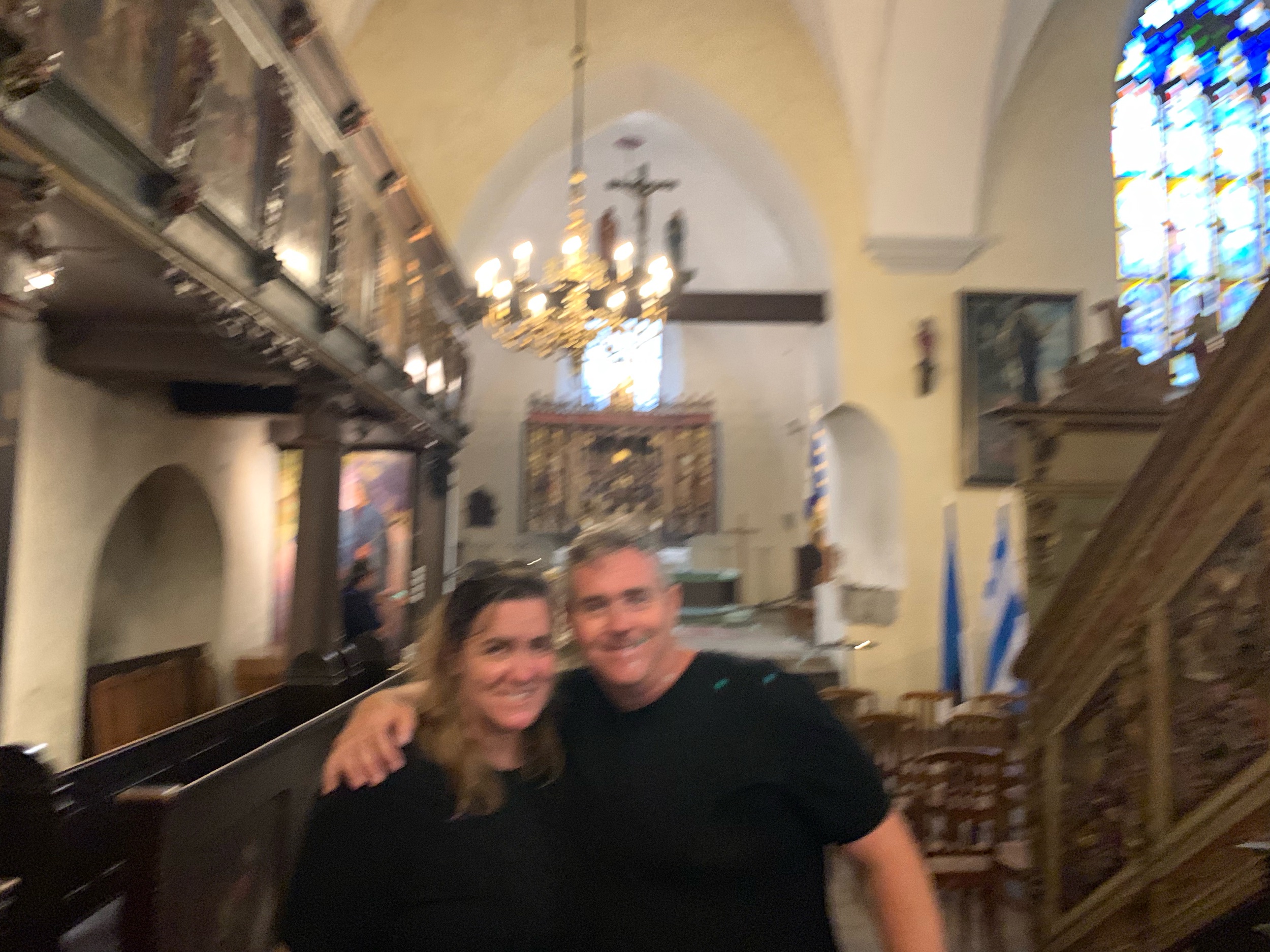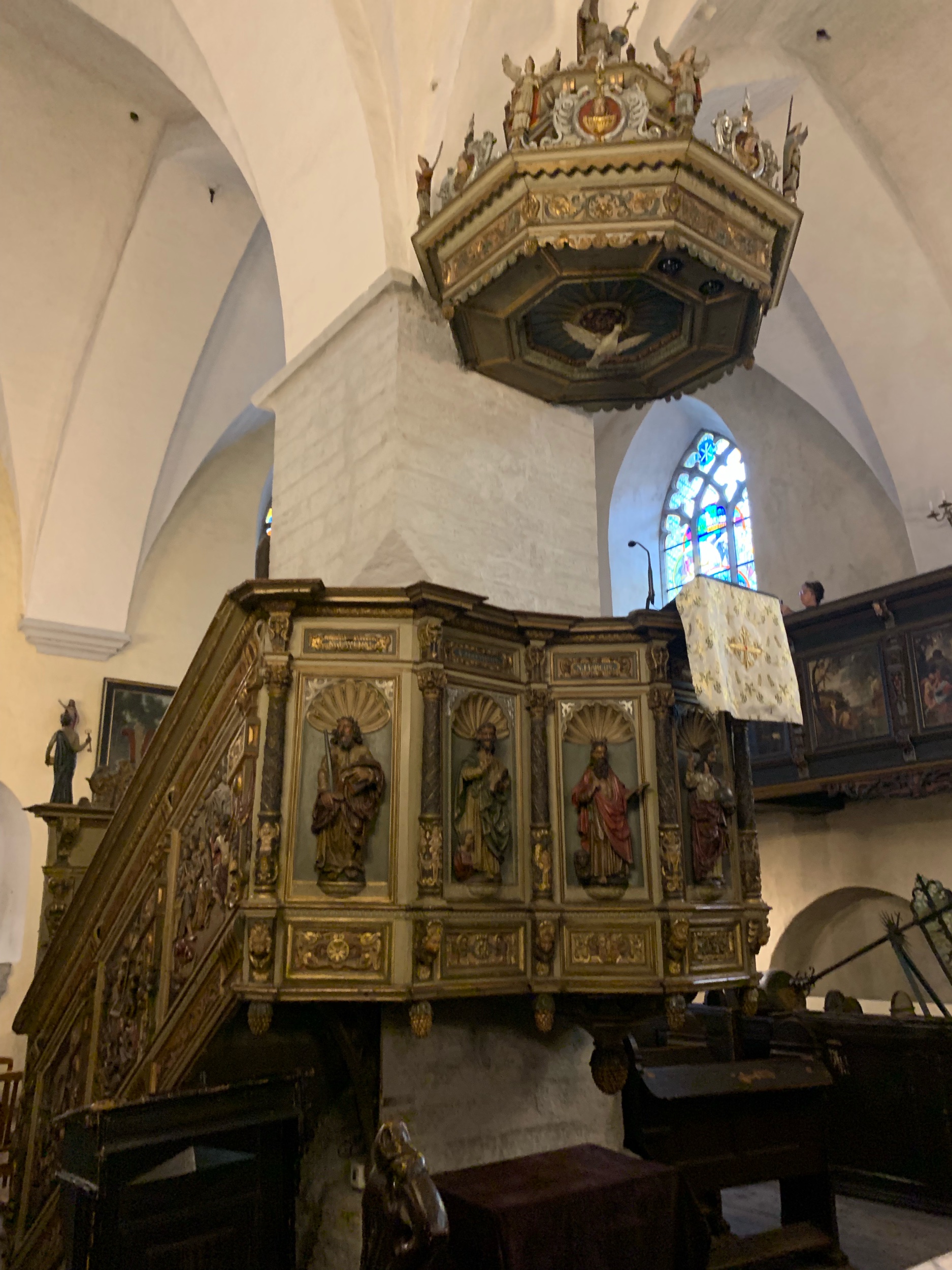9-2-19 - Tallinn, Estonia - fun facts and nuclear fallout bunkers
/Day 78.
The cruise goes from St. Petersburg back to Helsinki and then heads across the Baltic Sea to Tallinn, Estonia. Estonia was not on our original country list but when I was signing up for the St. Petersburg cruise, they offered to extend the cruise to Tallinn for 18 Euros (~$20) so how I am going to turn that down? John is excited and convinces me to add Riga, Latvia as well.
So I admit I know almost nothing about the Baltic countries before our arrival. Justin has taken on the role of gathering fun facts about the countries we are going to get us up to speed.
So without further ado, Justin presents top 10 fun facts on Estonia…
(1) Estonia has the highest ratio of women to men of any country in the world
(2) Estonia has the 2ndhighest literacy rate (99.8%) in the world
(3) Estonia has the highest startups per capital in Europe
(4) Estonia is known as the Silicon Valley of Europe and is the birthplace of Skype
(5) Estonia loves their trees with over 50% of Estonia is covered in forests
(6) Estonia is the least populous country in Europe with 1.4M people
(7) Estonia has more tourists than residents
(8) Estonia was the first country to adopt online voting in 2005 and had their Parliamentary election online in 2007
(9) Estonia was the birthplace of the first Christmas tree (although Latvia claims this as well)
(10) Estonia has the largest collection of written folk songs (133K) in the world
Upon arriving, we check into our Airbnb. We are located right Town Hall Square in the UNESCO World Heritage Site of the Tallinn Old Town. It is another beautiful city with cobblestone streets and no cars are allowed in a large portion of the Old Town. Similar to Croatia, there are restaurants with outdoor tables set up right on the streets (the advantage of being there in good weather time of year).
We have a compressed schedule in the Baltic countries due to their late addition to the schedule so we get right to work. We go to the Great Guild Hall which was a guild for merchants and artisans dating back to the 14thcentury and was used for trade, social events and court proceedings over the years. Now it is the Estonian History Museum. The Museum is organized around 8 questions that define who the people of Estonia are. The first question is “Is Estonia Nordic or Baltic?”
The Baltic countries are considered to be Estonia, Latvia and Lithuania. The Nordic countries are considered to be Norway, Sweden, Denmark, Iceland and Finland (and their associated territories. However, from a language perspective, Latvian and Lithuanian are Baltic languages whereas Estonian is Uralic language which is related to Finnish. Speaking of Finnish, Estonia is supposedly best friends with Finland and apparently like them more than their Baltic sisters to the south.
Since Finland is a Nordic country, apparently Estonia wants to be considered a Nordic country as well. So it seems to come down to this – if you ask Estonia, they answer that they are Nordic, if you ask the Nordic countries, they answer that Estonia is Baltic. And if you ask Latvia or Lithuania, they ask why Estonia likes Finland better than them.
Having resolved that question, we head to The Holy Spirit Church of Tallinn. The church is mentioned for the first time in 1319 and is an Estonian Evangelical Lutheran Church. We’ve learned in the Museum that Estonia is the least religious country in Europe with only 20% of people identifying with a traditional religion (of those 2/3 are Lutheran and 1/3 Russian Orthodox Christian with a handful of Roman Catholics). This is partly because the spread of Christianity in Europe arrived last to the Baltics not until late 14thCentury. Estonia also has a tradition of Paganism worshipping gods of nature and trees some which persists today. The church is having an organ rehearsal which is an added bonus.
Next we head Oleviste Kogudus which is a church which has been hit by lightning 10 times resulting it being burned down 3 times but each time was rebuilt and still stands today. Corey points out that Mother Nature may be working hard but God is working harder.
As we are walking through the Old Town, we see a nuclear fallout shelter aptly named The Fallout Shelter Bunker bar which promises not only cold beer but also protection from radiation and bad weather. I think it would be cool to check it out but I am told we need to get to the Sea Plane museum thing before it closes. I give it one last attempt “but what if a really bad radiation storm hits while we’re walking exposed out here in the open? Then you’ll wish you were nestled safely in the Bunker Bar.” I am out-voted 6-1 as apparently no one else is worried about the impending radiation storm but me.
As we leave the city gates, you can see more evidence of the bygone Soviet era. Across from the Museum is a bombed-out building with no windows or doors left but the structure mostly intact. We are told at the museum that it is an old war building.
The inside of the Sea Plane Museum houses all sorts and manner of boats and ships. Some of the more interesting ones include a Maaslinna ship which was recovered in 1985 and is the oldest preserved ship of Estonian origin built in the 16thCentury. It was a single mast ship with no deck (looked like a gigantic rowboat). Another was the EML Lembit which was built in 1937 and used by the Soviets during WW II.
The most interesting are boats used by Estonians to escape from the impending Soviet occupation during WW II. By the end of WW II, 80,000 Estonians had fled their homeland (which was considerable given their small population) mostly on rowboats escaping to Germany, Sweden and Finland while many thousands perished in the Baltic Sea. This has been termed the Great Escape to the West of 1944.
We are about to go outside to see the sea planes when the heavens open up and torrents of rain pour henceforth. I note the rain appears to be glowing a strange incandescent color and I declare the radiation storm is upon us wondering if we have time to make it back to safety of the Bunker Bar.
We end up at the dinner place outside our Airbnb under umbrellas and heat lamps. They have the authentic Estonian cuisine which is heavily meat based given the large animal population covering 50% of the land. Justin and I order wild elk and Corey orders wild boar. Justin points out that it’s not necessary to say “wild” given the probable lack of “domesticated” elk and boar being kept by Estonian’s as pets. I concede the point.






























